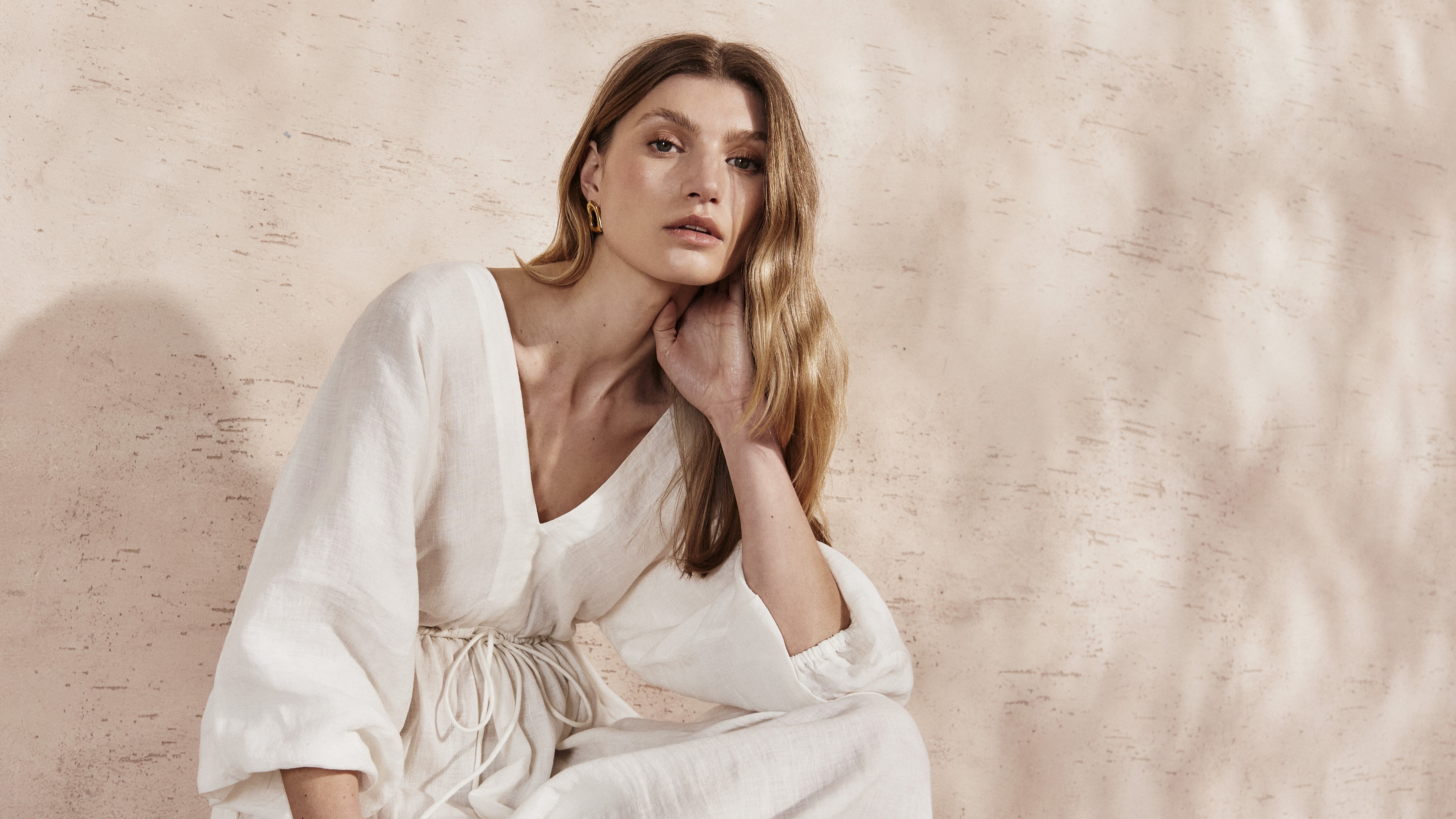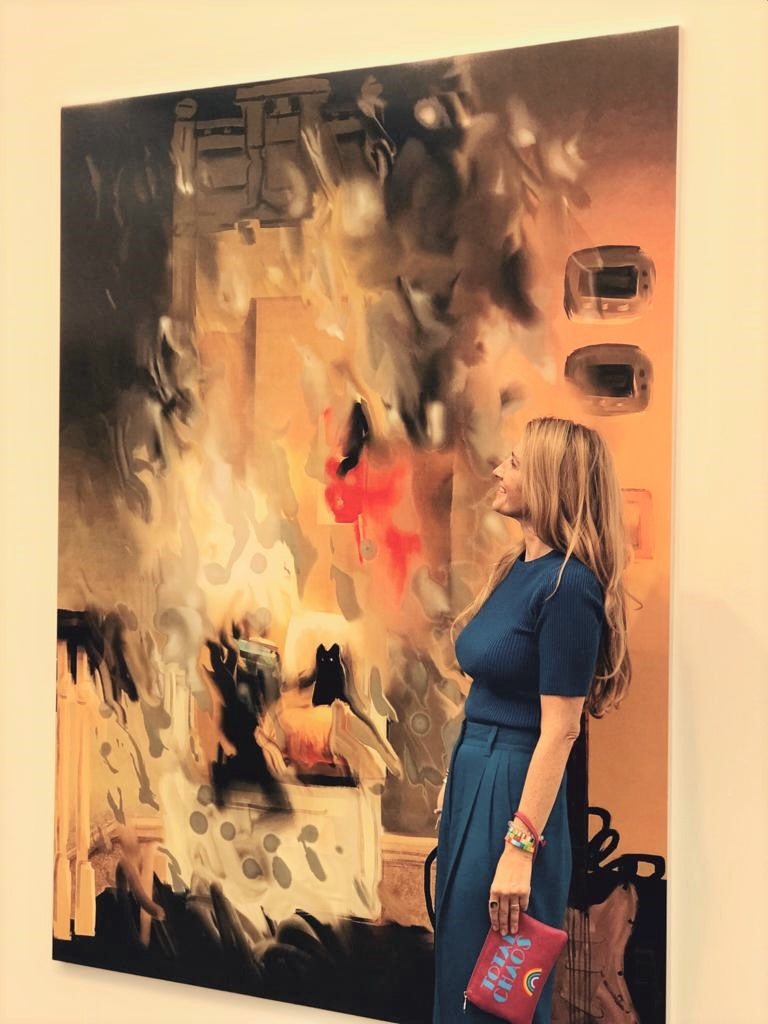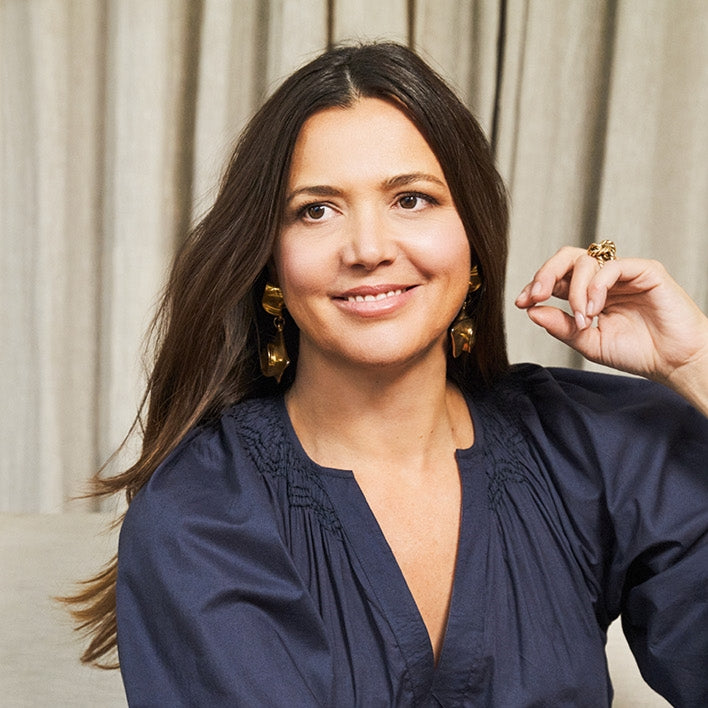THE ENDURING STYLE OF MAXIMALIST JEWELLERY
As with most style phenomena, no one’s ever quite sure who started the trend. Some historians attribute the provenance of costume jewellery to couturier Paul Poiret, who, in 1910, adorned his models with necklaces made from silk tassels and semi-precious gemstones. Others argue that it was Coco Chanel who popularised the use of imitation gems and faux pearls in the 1920s.
One thing’s for certain: costume jewellery is a wonderful invention, with the power to transform an outfit – and attitude (there’s nothing like an irreverently oversized and intricately encrusted cuff to buoy the mood). That’s why we’ve launched Mondo Bijoux – a collection of one-of-a-kind jewels lovingly sourced on our travels. To celebrate, we’re shining the spotlight on two women who were never without one (or five) pieces of costume jewellery. In maximalists we trust.
Coco Chanel

Coco with Jewellery, Mark Shaw
“It’s disgusting to walk around with millions around the neck because one happens to be rich. I only like fake jewellery...because it’s provocative”, once quipped Coco Chanel. Indeed, the iconic French designer played a large part in making costume jewellery fashionable.
Inspired by her circle of bohemian friends, she layered up ropes and ropes of faux pearls, stacked bangles and wore mismatched earrings (a black pearl in one ear, a white pearl in the other).
Chanel collaborated with the likes of Duke Fulco di Verdura, the Sicilian nobleman who designed the maison’s iconic Maltese cross in 1927 – an enduring symbol for the house of Chanel. In 1927 came diamond paste jewellery and in 1929 brilliant beaded sautoirs in red, green and yellow, as well as oversized wooden chains.

Roger Viollet/Lipnitzki/Getty Images
By the mid ‘30s, Chanel’s bijoux had (quite literally) grown in size, the signature piece a heavy bib of faux pearls, coins and riotously coloured gemstones, inspired by India and Southeast Asia. Jacket fastenings were removed in favour of statement brooches, while bejewelled cuffs were designed to eclipse each cuff of a shirt.
Elsa Peretti

Elsa Peretti at her work table in Halston, by Duane Michals, 1974
Designer and model Elsa Peretti championed a subtler approach to costume jewellery with her arrestingly organic, invitingly tactile pieces. In 1968, her first jewellery designs – a silver bud vase necklace and a heart-shaped belt – garnered attention when they were featured in both Sant’Angelo and Halston’s New York fashion shows.
In 1974, she joined Tiffany, introducing silver to the brand and designing over 30 collections in her tenure, including Bean, Mesh, Bone and Open Heart (the latter influenced by the sculptures of Alexander Calder and Henry Moore). For her 1990 exhibition at New York’s FIT, she explained the inspiration behind her iconic Bone Cuff:
“My love for bones has nothing macabre about it. As a child, I kept on visiting the cemetery of a seventeenth-century Capuchin church with my nanny. All the rooms were decorated with human bones. My mother had to send me back, time and again, with a stolen bone in my little purse. Things that are forbidden remain with you forever.”
Whether you prefer sculptural forms or gemstone-encrusted objects d’art, a single cuff or layers of jewels, we hope these bijoux muses inspire you to add a little hardware to your everyday ensembles.
Shop Mondo Bijoux here.


